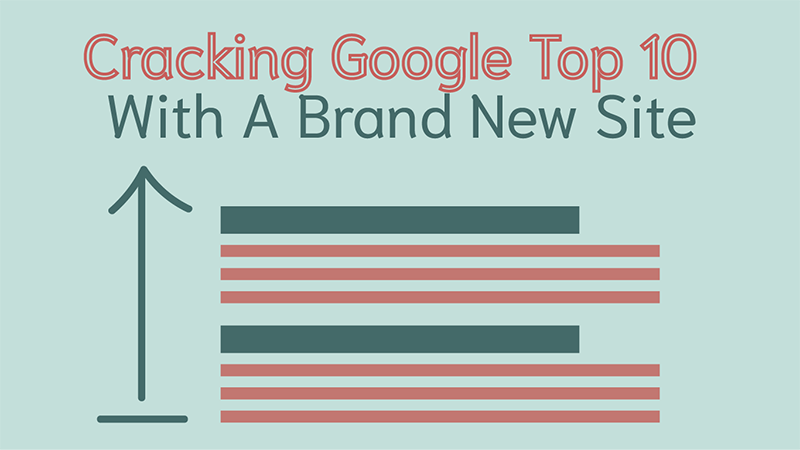How to crack the top 10 in Google search results using easy to use WordPress plugins with a solid content creation strategy
How we took a brand new website in a competitive market and cracked the top 10 in Google search results (and how you can too!) This EASY five-step process will have you on your way to being found online.
We run a few businesses in the marine graphics industry. One, Michigan MC Numbers has been in 9 of the top 10 spots for search results for more than a decade – so high on the results that we regularly get calls for the Secretary of State of Michigan because people think we’re them!
We launched our sister site for the rest of the US states last winter, and we’re now in the top 10 in a highly competitive market (it’s not rocket science; anyone with basic tech skills can cut vinyl.) How’d we do it? We didn’t spend (much) money with Google at all, and we did it all with a solid content strategy and some basic (free) WordPress plugins. Let’s explore how we did it!
We run both sites from WordPress, WooCommerce and we don’t use fancy builder apps like Elementor and Beaver builder. Builder apps produce weighty code that slows down sites and Google (and your customer) don’t like slow sites. We use a basic solid template with the right design and information, and the right content strategy.
- Choose a good lightweight theme
- Design your homepage for the user
- Create optimized pages and posts for EVERY possible search term. Yes, that’s a lot of content!
- Update your site WEEKLY, if not more often
- Use good plugins for SEO
Why a lightweight theme? Bloated themes and front-end-builders slow down websites. Yes, adding cache plugins helps, but they conflict with commerce systems, and Google (and your customer) do not want to wait even a half second longer for pages on your site to load. When we look for themes, we test out how fast they load and we choose the ones with the most on-board native editing within WordPress as possible. We like Blocksy for it’s native integration of the WP Blocks design system.
Design your homepage for your user. It’s amazing when you focus right on what your customer is asking up front how WELL that works to direct people to the right place to order. A product grid on your home page should be in rows of 3. Feature your best product (upsell) first. Use a header video only if it’s compact and lightweight.
Check out our homepage optimization blog post here for more tips on how to design your home page for user conversions.
Create optimized pages for EVERY search term. Is this a lot of work? YES, but remember, most people do not find your site through the front door (home page), they come in through the screen side door (blog posts and pages) that are targeting the words they’re searching. We use pro SEO keyword tools but you can do your own Google searches and see what predictive text pops up in the search bar to find a few keywords that might resonate with your customers. Pro tools allow you to zero in on the number of searches, whether that search is informational or transactional and how easy it is to rank on (or not). Those pro tools (contact us! We can help you!) are essential for making your new pages and posts work hard for you.
Update your site weekly, if not more often. Of all the advice we give to clients THIS one is the most important. And it’s the hardest to do.
What kind of updates? I’ll tell you that practical experience says create a page of content for every search term you want to rank for, but my experience has been that if you are a commerce store and you update orders on your site, just the act of going in and updating orders seems to trigger Google into knowing the site is updated. This shouldn’t be the case – your activities are behind the scenes, after all. But it does seem to help – your action of being on your site seems to trigger increases in traffic. If you want to rank for it though, create content for everything you want to be found for (as its own post, or page.)
Use a good SEO Plugin:
All in One SEO, Yoast SEO are our favorites. Both use a red-yellow-green ranking system to show you where you need to improve your post and page. What they don’t tell you is WHAT to write, or how to write it, and we outline that in several of our blog posts here and here. They won’t tell you what keyphrases you’ll need to use (we can help you with that using our pro search tools.) But armed with this information, you can create content weekly that aligns with what users are searching for, increasing your chances for ranking for that keyword.
Understanding the interaction of social and search
It’s NOT social media, or outbound email marketing for many businesses, it’s search and SEO. People are looking for things, you need to be the result they find and select. But yes, connecting with new customers, being the “discovery brand” on social IS important, but if they’re on Google looking for your products, they aren’t searching Instagram for them. Google is a shortcut.
That being said, social can influence search – your content on Facebook, Instagram and Pinterest, after all, ARE search results in Google IF, provided IF there are no other more relevant searches Google can show the user.
Cracking the top 10 can take some time – a few months to a year, but you can do it, even with a very me-too product that is easy to produce, price and sell. For a more niche market, you might make a top 10 ranking in weeks after a site launch and stay there with relative ease.
*note, we did spent under $500 with Google on one of the sites early on, but results were not satisfactory and we stopped within 2 months.
Need a little help? Consult with Ann on your SEO setup!




